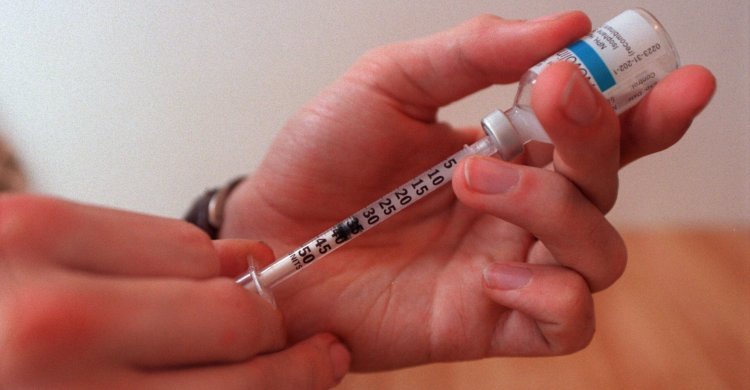What Congress Shouldn’t (and Should) Do About Cost of Insulin
Many diabetics have seen their out-of-pocket costs for insulin increase significantly in recent years, and for some, those costs have become unaffordable. In response, members... Read More The post What Congress Shouldn’t (and Should) Do About Cost of Insulin appeared first on The Daily Signal.

Many diabetics have seen their out-of-pocket costs for insulin increase significantly in recent years, and for some, those costs have become unaffordable.
In response, members of Congress from both parties are looking to “do something.” However, “doing something” is not necessarily the same as enacting an effective solution.
Indeed, when Congress enacts badly designed “solutions,” it often creates new problems, or even makes the original problem worse.
That would be the case with the latest proposal to address the cost of insulin, sponsored by the co-chairs of the bipartisan Senate Diabetes Caucus, Sens. Jeanne Shaheen, D-N.H., and Susan Collins, R-Maine.
Their proposal differs from others in that it doesn’t directly impose price controls by government dictate, but rather takes the more indirect approach of offering insulin-makers a “golden handcuffs” deal.
Under the Shaheen-Collins legislation, manufacturers could voluntarily apply to have one or more of their insulin products “certified” by the government. For an insulin product to be “certified,” the manufacturer would have to agree to charge no more than the “maximum list price” set by the Department of Health and Human Services.
HHS would set those maximum prices based on the net prices paid for insulin products in 2021 by Medicare Part D drug plans, increased annually by the rate of general inflation.
In exchange, the federal government would publish an annual list of such “certified” insulin products and require all Medicare, Medicaid, and private health plans to cover those products.
The federal government would also bar health plans from charging enrollees cost-sharing of more than $35 per 30-day supply for “certified” insulin products and prohibit plans from obtaining any further direct or indirect “price concession” (e.g., discounts or rebates) from manufacturers.
Health care plans would also be prohibited from imposing on their enrollees “any prior authorization or other medical management requirements, or other similar conditions on such insulin.”
Basically, in exchange for the manufacturer agreeing to let the government set the maximum price for its product, the government would provide the manufacturer with a captive market of customers required to buy the product and prohibited from obtaining lower prices.
The result would be a government-sponsored “insulin cartel”—under which the “ceiling” prices would effectively be the “floor” prices as well.
There are a number of problems with this particular “solution.”
To begin with, it would undercut recent efforts by the Food and Drug Administration to enhance market competition by creating a simpler regulatory pathway for approving “interchangeable biosimilar” (i.e., “generic”) insulin products.
Yet, encouraging more generic competitors will only make a difference if health plans can incentivize enrollees to choose cheaper products—something that the Shaheen-Collins proposal would all but completely preclude.
Second, Congress’ enacting this legislation would create a price-control regime that could be applied to more drugs in the future. That, in turn, would not only discourage the development of new drugs, but also reduce the substantial savings that American consumers currently obtain when older drugs become generics.
That’s because those generic versions would no longer need to offer substantially lower prices to gain market share.
Even worse, adopting this approach would set the precedent of Congress effectively turning private health plans into “off-budget” government programs funded by “stealth taxes” in the form of increased employer and employee premiums.
Once Congress starts mandating benefits at the level of detail entailed in the Shaheen-Collins legislation, there’s nothing to stop Congress from doing the same for other drugs or medical services—driving up the cost of health insurance for the 170 million Americans with private coverage.
Indeed, one implication of the Congressional Budget Office’s analysis is that the Shaheen-Collins legislation would increase the cost of private employer-sponsored and individual-purchased health insurance plans by about $1.5 billion a year in 2024, growing to about $3 billion a year by 2032.
An even more basic flaw is that the Shaheen-Collins proposal is premised on a fundamental misunderstanding of the underlying issue.
Specifically, the cost of insulin issue is primarily about what patients are paying out-of-pocket for their insulin, and only secondarily about what insulin-makers charge for their products. Yet, the Shaheen-Collins proposal takes the inverted approach of primarily regulating manufacturer prices and secondarily regulating patient out-of-pocket costs.
Understandably, the focus has been on the patients who are paying more. Yet, at the same time there are also patients for whom that isn’t the case, because their health plans charge them modest copays.
So, the more relevant question is, why are some patients faced with high and rising out-of-pocket costs while most others are not?
Digging into the data, it turns out that what insulin-makers actually get paid for their products is much less than what they nominally charge as their “list” prices. Furthermore, while in recent years “list” prices have escalated, “net” prices have simultaneously declined.
Recent research on systemwide insulin prices found that the average list price for 100 units of insulin increased from $19.60 in 2014 to $27.45 in 2018—or, by 40% over five years. Yet, during the same time period, the average net price received by manufacturers declined by 31%—from $10.53 in 2014 to $7.29 in 2018.
That raises the next relevant question: If some patients are paying more, but manufacturers are receiving less, then who’s getting the difference?
The answer: Most of the difference is being pocketed by middlemen, specifically pharmacy benefit management companies.
Those companies negotiate with drugmakers on behalf of their health plan clients. Typically, rather than charging fees for their services, they take a cut of the savings. Yet, that induces them to favor manufacturers that give large rebates off high list prices.
Thus, to get their products covered by health plans, manufacturers must raise their list prices to give the middlemen a bigger cut. This perverse dynamic explains the paradox of how list prices increased 40% while the net payments that manufacturers received declined by 30%.
For patients, the effects depend on the design of their health plan. Those patients being hit with high out-of-pocket costs are the ones in plans that make them pay a percentage (coinsurance) of the drug’s list price. In contrast, patients in plans with coinsurance based on net (rather than list) prices, or plans that charge enrollees fixed dollar cost-sharing (copays) are largely unaffected.
Instead of the Shaheen-Collins proposal, the better solution would be for Congress to clarify that pharmacy benefit management companies should be treated as fiduciaries of their client health plans.
As such they would be obliged to act in the best interests of those plans and their enrollees—such as by passing on all discounts and rebates received from manufacturers and giving preference to products that offer lower net costs to plans and patients.
Have an opinion about this article? To sound off, please email letters@DailySignal.com and we’ll consider publishing your edited remarks in our regular “We Hear You” feature. Remember to include the url or headline of the article plus your name and town and/or state.
The post What Congress Shouldn’t (and Should) Do About Cost of Insulin appeared first on The Daily Signal.




















